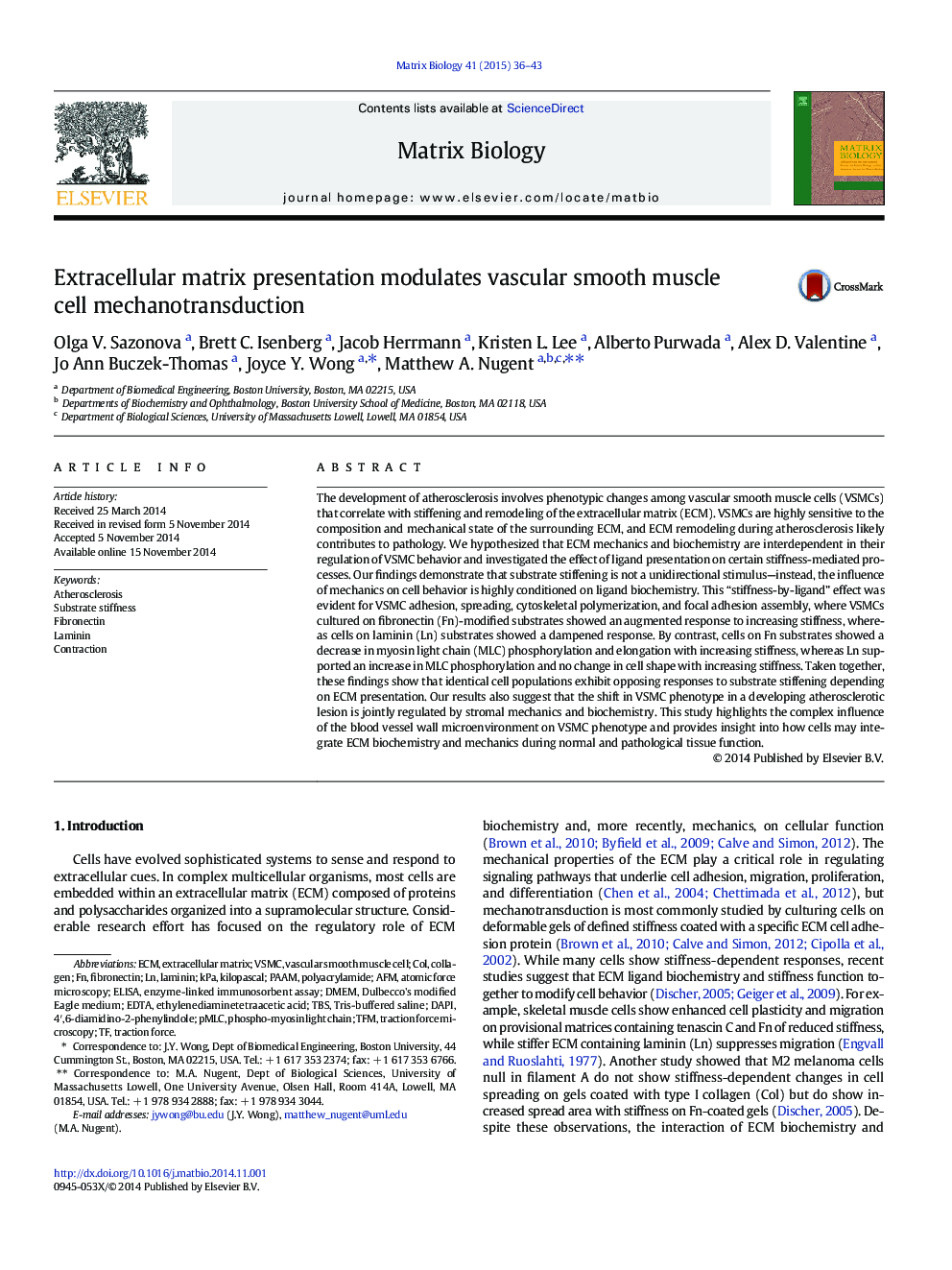| کد مقاله | کد نشریه | سال انتشار | مقاله انگلیسی | نسخه تمام متن |
|---|---|---|---|---|
| 2144743 | 1548015 | 2015 | 8 صفحه PDF | دانلود رایگان |
• Vascular smooth muscle cell response to substrate stiffness is dependent on the presentation of protein ligands.
• Fibronectin promotes the synthetic VSMC phenotype with increasing stiffness, while laminin promotes the contractile state.
• VSMCs integrate competing signaling from different ligands when responding to substrate mechanics.
• Changes in extracellular matrix composition with disease likely interact with ECM mechanics to drive VSMC pathology.
The development of atherosclerosis involves phenotypic changes among vascular smooth muscle cells (VSMCs) that correlate with stiffening and remodeling of the extracellular matrix (ECM). VSMCs are highly sensitive to the composition and mechanical state of the surrounding ECM, and ECM remodeling during atherosclerosis likely contributes to pathology. We hypothesized that ECM mechanics and biochemistry are interdependent in their regulation of VSMC behavior and investigated the effect of ligand presentation on certain stiffness-mediated processes. Our findings demonstrate that substrate stiffening is not a unidirectional stimulus—instead, the influence of mechanics on cell behavior is highly conditioned on ligand biochemistry. This “stiffness-by-ligand” effect was evident for VSMC adhesion, spreading, cytoskeletal polymerization, and focal adhesion assembly, where VSMCs cultured on fibronectin (Fn)-modified substrates showed an augmented response to increasing stiffness, whereas cells on laminin (Ln) substrates showed a dampened response. By contrast, cells on Fn substrates showed a decrease in myosin light chain (MLC) phosphorylation and elongation with increasing stiffness, whereas Ln supported an increase in MLC phosphorylation and no change in cell shape with increasing stiffness. Taken together, these findings show that identical cell populations exhibit opposing responses to substrate stiffening depending on ECM presentation. Our results also suggest that the shift in VSMC phenotype in a developing atherosclerotic lesion is jointly regulated by stromal mechanics and biochemistry. This study highlights the complex influence of the blood vessel wall microenvironment on VSMC phenotype and provides insight into how cells may integrate ECM biochemistry and mechanics during normal and pathological tissue function.
Journal: Matrix Biology - Volume 41, January 2015, Pages 36–43
